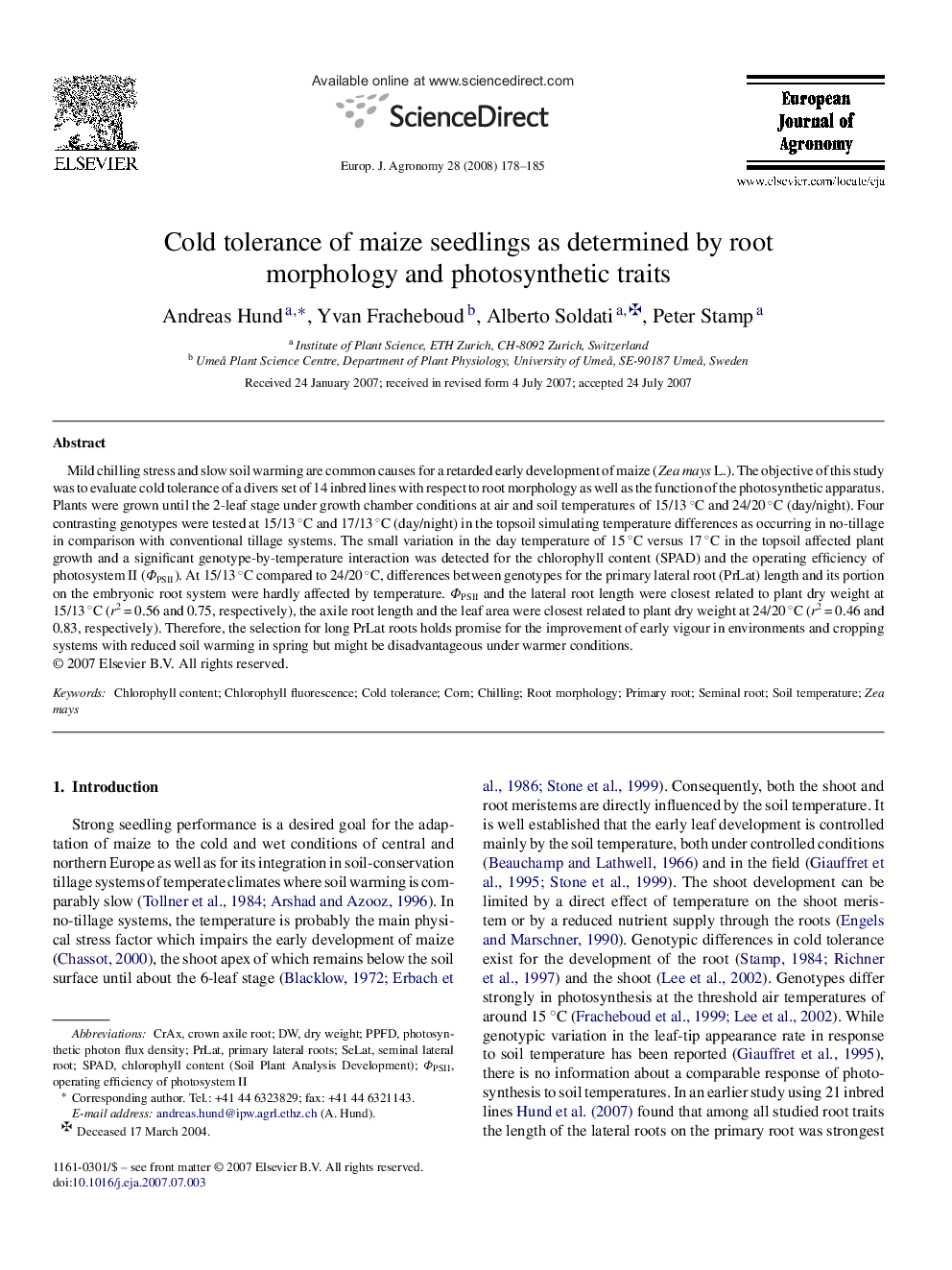| Article ID | Journal | Published Year | Pages | File Type |
|---|---|---|---|---|
| 4509451 | European Journal of Agronomy | 2008 | 8 Pages |
Mild chilling stress and slow soil warming are common causes for a retarded early development of maize (Zea mays L.). The objective of this study was to evaluate cold tolerance of a divers set of 14 inbred lines with respect to root morphology as well as the function of the photosynthetic apparatus. Plants were grown until the 2-leaf stage under growth chamber conditions at air and soil temperatures of 15/13 °C and 24/20 °C (day/night). Four contrasting genotypes were tested at 15/13 °C and 17/13 °C (day/night) in the topsoil simulating temperature differences as occurring in no-tillage in comparison with conventional tillage systems. The small variation in the day temperature of 15 °C versus 17 °C in the topsoil affected plant growth and a significant genotype-by-temperature interaction was detected for the chlorophyll content (SPAD) and the operating efficiency of photosystem II (ΦPSII). At 15/13 °C compared to 24/20 °C, differences between genotypes for the primary lateral root (PrLat) length and its portion on the embryonic root system were hardly affected by temperature. ΦPSII and the lateral root length were closest related to plant dry weight at 15/13 °C (r2 = 0.56 and 0.75, respectively), the axile root length and the leaf area were closest related to plant dry weight at 24/20 °C (r2 = 0.46 and 0.83, respectively). Therefore, the selection for long PrLat roots holds promise for the improvement of early vigour in environments and cropping systems with reduced soil warming in spring but might be disadvantageous under warmer conditions.
